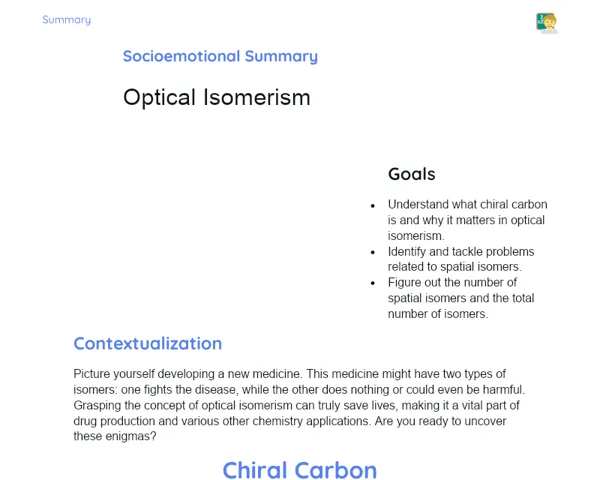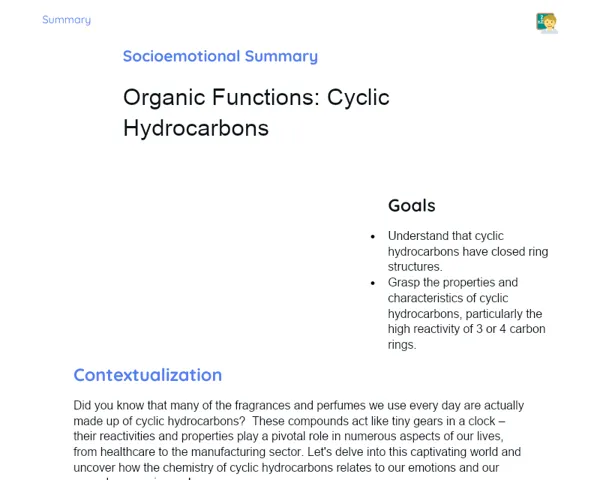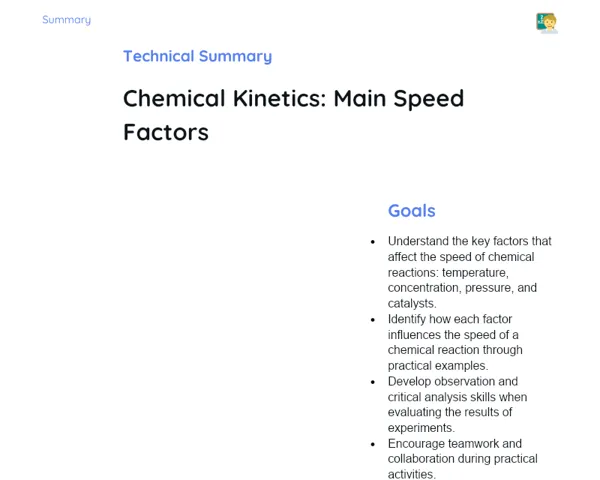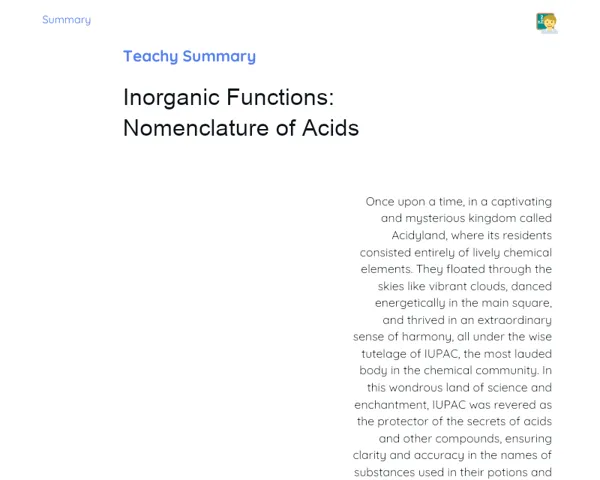Summary Tradisional | Chemical Bonds: Metallic
Contextualization
Metals are an integral part of our everyday lives, from the buildings we live and work in to the technology we rely on. To really grasp how these materials function and why they behave in certain ways, it's important to dive into the study of metallic bonds. A metallic bond is a special type of chemical connection that gives metals their distinct features, including their ability to conduct electricity and heat. Understanding these bonds is key to advancing our knowledge of chemistry and its vital role in modern technology.
Metallic bonding happens when metal atoms shed some of their electrons, creating a 'cloud' or 'sea of electrons' that can flow freely around positively charged metallic ions. This electron sea is what gives metals their characteristic properties—like their capacity to conduct electricity and retain heat. Additionally, these bonds lend metals their malleability and ductility, allowing them to be shaped in various ways without snapping. By studying these bonds, we gain insight into the structure and practical usage of metals in our daily lives and industries.
To Remember!
Concept of Metallic Bonding
Metallic bonding is a specific type of chemical bond found between metal atoms. In this bond, metallic atoms release some of their valence electrons, forming a 'sea of electrons' that flows around positive metallic ions. These free electrons are not tied to any particular atom but are shared among all metal atoms, resulting in a network of bonds that holds the metallic structure together.
This 'sea of electrons' sets metallic bonding apart from other bond types, like covalent and ionic bonds. With covalent bonds, electrons are shared between specific atoms, and in ionic bonds, electrons move from one atom to another. In metallic bonds, electrons can move freely throughout the metal's structure.
This feature gives metals unique characteristics such as high electrical and thermal conductivity, malleability, and ductility. The free electrons are crucial for electrical conduction, as they facilitate the flow of electric charge through the metal. Likewise, they aid in heat transfer by efficiently spreading thermal energy.
-
Metallic bonding involves a 'sea of electrons' around metal atoms.
-
Valence electrons are shared amongst all metal atoms.
-
This electron mobility gives metals special properties like excellent electrical and thermal conductivity.
Sea of Electrons
The 'sea of electrons' is essential for understanding metals' properties. This term describes the way valence electrons in metallic atoms move freely throughout the metal's structure, unbound by specific atoms. These electrons create a cloud around the positive metal ions, forming a network of bonds that maintains the structure's integrity.
The movement of electrons within this 'sea' is responsible for key properties of metals, such as their electrical and thermal conductivity. Because electrons can move about, they can transport electric charge, making metals superb conductors. They also help transfer heat efficiently from one part of a metal to another, which promotes effective heat conduction.
Furthermore, this 'sea of electrons' contributes to metals' malleability and ductility. Metallic ions can slide past one another while the pool of free electrons keeps the structure intact. Thus, metals can be shaped without fracturing, a characteristic vital for many industrial and technological processes.
-
The 'sea of electrons' illustrates how valence electrons move in metals.
-
This movement accounts for metals' high electrical and thermal conductivity.
-
The 'sea of electrons' also facilitates the malleability and ductility of metals.
Properties of Metals
The unique properties of metals stem directly from the 'sea of electrons.' Key characteristics include electrical conductivity, thermal conductivity, malleability, and ductility. These traits make metals incredibly versatile materials for a range of applications.
The ability of metals to conduct electricity comes from the freedom of electrons to move and carry electric charge. This is why metals like copper and aluminum are the go-to choices for electrical wiring and electronic components. Similarly, their high thermal conductivity allows for effective heat transfer, which is particularly important for kitchen tools like pots and pans that require even heat distribution.
Malleability and ductility enable metals to be crafted into various shapes without breaking. Malleability refers to how easily a material can be worked into thin sheets, while ductility indicates how well a metal can be pulled into long wires. These properties are fundamental in producing everything from aluminum foil to gold wires used in jewelry.
-
Metals conduct electricity thanks to free-moving electrons.
-
Thermal conductivity facilitates effective heat transfer.
-
Malleability and ductility permit metals to be reshaped without breaking.
Crystal Structure of Metals
The crystal structure of metals is the systematic and compact arrangement of metallic atoms. This organisation significantly affects metals' physical attributes, including their strength and durability. In a metallic crystal, atoms are arranged in a repetitive pattern that extends in all directions.
There are various crystal structures in metals, such as face-centered cubic (FCC), body-centered cubic (BCC), and hexagonal close-packed (HCP). Each of these structures has distinct characteristics that influence the properties of the metals. For instance, metals like aluminum and copper have the FCC structure, which is known for its high ductility and malleability.
This crystal framework also enables metallic atoms to move over one another under stress without compromising the structure's integrity. This underpins the malleability and ductility of metals, allowing their atoms to rearrange without losing cohesion. Plus, the structured and compact nature of the arrangement contributes to metals' high density, making them strong and reliable materials.
-
The crystal structure of metals consists of a systematic arrangement of metallic atoms.
-
Different types of crystal structures, like FCC and BCC, exist.
-
This structure provides metals with malleability and ductility and contributes to their density.
Key Terms
-
Metallic Bonds: A type of chemical bond between metal atoms, characterised by a 'sea of electrons.'
-
Sea of Electrons: A concept illustrating the mobility of valence electrons in metals, driving their unique properties.
-
Electrical Conductivity: The ability of metals to conduct electricity due to their free electrons.
-
Thermal Conductivity: The capability of metals to transfer heat efficiently, aided by mobile electrons.
-
Malleability: The ability of metals to be deformed into thin sheets without breaking.
-
Ductility: The capacity of metals to be stretched into long wires without breaking.
-
Crystal Structure: The ordered and compact arrangement of metallic atoms that affects their physical properties.
Important Conclusions
Metallic bonding is a vital concept in chemistry, explaining metals' distinct features, including their high electrical and thermal conductivity, malleability, and ductility. These attributes are essential for various technological and industrial uses, from crafting electronic circuits to civil construction. By comprehending the crystal structure of metals and the nature of the 'sea of electrons,' we can appreciate the versatility and extensive applications of metals.
Moreover, the organised and compact configuration of metallic atoms contributes to metals' strength and durability, allowing them to endure stress and deformation while maintaining their structural properties. This makes metals crucial materials across numerous engineering and technological fields. Their ability to be shaped and conduct heat and electricity efficiently renders them indispensable in our everyday lives.
Ultimately, studying metallic bonding not only deepens our understanding of chemistry but also opens doors to innovation in materials and manufacturing processes, underscoring chemistry's ongoing relevance to technological advancement. I encourage you all to further explore this engaging topic and its numerous real-world applications.
Study Tips
-
Reread the concepts surrounding the 'sea of electrons' and its relation to metals' properties.
-
Find examples in your daily life, like kitchen tools and gadgets, to identify the properties of metals.
-
Do more research on the crystal structures of metals and how different atomic arrangements affect their physical attributes.



